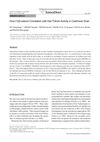Molecular Basis of Maintaining Circannual Rhythm in the Skin of Cashmere Goat
September 2020
in “
Research Square (Research Square)
”
TLDR Goat skin adapts to seasonal changes through genes that respond to daylight length, affecting hormone levels and potentially making skin cells light-sensitive.
In the study of the cashmere goat's skin, researchers used PacBio single-molecule long-read sequencing to analyze the transcriptome, identifying 82,382 high-quality non-redundant transcripts from 193,310 genes, including 4,237 novel genes. Additionally, 39 skin transcriptomes were sequenced using Illumina Hi-Seq2500 over a year, revealing 980 differentially expressed genes, with 403 seasonal rhythm genes (SRGs) showing a seasonal pattern. These SRGs, which are related to hormone secretion and eye morphogenesis, varied in expression with changes in daylight length, peaking near the summer solstice. The study found that the Dio1 gene expression might be influenced by photoperiod, affecting the transformation of inactive T4 to active thyroid hormone T3 in the skin. Moreover, differentially expressed miRNAs were observed as daylight length changed, and the skin expressed genes and miRNAs related to eye morphogenesis, suggesting potential light sensitivity in skin cells. The results suggest that SRGs regulate gene expression and physiological processes in the skin in response to seasonal changes, providing insights into how goat skin adapts to environmental factors.


